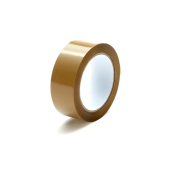Choosing the right head protection is very important in fields where safety is very important. Hard hats are one of the most important safety gear for keeping workers from getting head injuries, but it can be hard to figure out which one is best. Type 1 and Type 2 hard hats are the two main types. Each was made to protect against different levels of impact and for different types of work situations. This article will compare Type 1 and Type 2 hard hats, explain what they’re used for, and go over the standards they must meet. This will help you make an informed decision that follows European safety rules.
Overview of Hard Hat Standards in Europe
Before getting into the specifics of Type 1 and Type 2 hard hats, it’s important to know the safety rules that apply to personal protective equipment (PPE) in Europe. In Europe, hard hats have to meet the EN 397 standard for industrial safety helmets, which was made by the European Committee for Standardisation (CEN). EN 397 lists the basic requirements for head protection, such as being able to withstand impact, penetration, and fire. The EN 14052 standard talks about high-performance industrial safety helmets, which are made to protect against more impact and lateral deformation. They are used in situations that need stronger protection.
The two types of hard hats are designed to offer protection against different types of impact, and knowing which type you need can make a significant difference in workplace safety.
Type 1 Hard Hats: Top-Impact Protection
Definition and Design
Type 1 hard hats are made to protect you from falling objects and being hit from above. Most of the time, these hard hats have a single, full-brim design that protects the whole head. They are often used in construction, warehouses, and other places where falling objects are a major risk, like in general industry settings.
Impact Protection
Type 1 hard hats are put through tests to see how well they can handle direct, vertical impacts. They are put through a lot of tests to make sure they can spread out the force of something hitting the top of the hat. On the other hand, they don’t protect against side impacts, so they can’t be used in places where side protection might be needed.
Common Applications
- Construction sites: These are places where falling tools, trash, or materials can be dangerous.
- Storage and warehousing: To keep things from falling off of shelves or other storage places.
- General Industrial Use: For workers who mostly need safety from impacts from above.
Type 2 Hard Hats: Comprehensive Top and Side Impact Protection
Definition and Design
Type 2 hard helmets fit a greater spectrum of hazardous locations since they offer protection from both vertical and lateral impacts. Unlike Type 1 hats, Type 2 models frequently have a shell and foam lining combination to cushion impacts from many angles. Type 2 hard hats additionally incorporate added security in settings where lateral collisions could be a hazard by including side impact resistance testing.
Impact Protection
Type 2 hard helmets are evaluated both on the sides and for impact resistance from above. More broadly than Type 1 models, this dual-impact protection guarantees they can absorb force from both vertical and lateral sources. Apart from providing defence against falling objects, Type 2 hard helmets can also help to reduce the effects of bumps or collisions with stationary objects, hence fitting for situations where head movement might result in unintentional side impacts.
Common Applications
- Industrial and Manufacturing Plants: Where moving equipment or machinery increases the risk of side impacts.
- Electrical Work: Especially in areas where workers are in confined spaces or may encounter obstacles.
- Mining and Heavy Industries: Where environmental hazards are complex, and impacts can come from multiple directions.
Key Differences Between Type 1 and Type 2 Hard Hats
| Feature | Type 1 Hard Hat | Type 2 Hard Hat |
| Impact Protection | Vertical impact only | Vertical and lateral impact |
| Common Design | Full brim or front brim | Full brim or cap style |
| Typical Use | General industry, construction | Mining, heavy industry, electrical work |
| Standard Compliance | EN 397 | EN 14052 |
Each type of hard hat serves a unique purpose, but it’s critical to assess the specific risks associated with your workplace before making a selection.
Important Considerations When Choosing a Hard Hat
Selecting between a Type 1 and Type 2 hard hat requires evaluating several factors:
- Risk of Side Impacts: If workers are exposed to side impacts, Type 2 hard hats offer the required protection. For workplaces where risks are primarily from above, Type 1 may suffice.
- Comfort and Fit: For workers who wear hard hats for long amounts of time, comfort is very important. Type 1 and Type 2 hard hats come in different styles, such as cap-style or full-brim styles, so you can choose one that fits and feels good to you. Some types also come with headbands that can be adjusted to fit your head perfectly.
- Environmental Factors: In some environments, additional considerations like electrical insulation may be necessary. Certain hard hats offer electrical resistance, commonly identified with “Class E” or “Class G” ratings in international standards, to protect against electrical shock hazards. Always check the specific labeling and certifications for any hard hat to ensure it meets your site requirements.
- Comfort at Work: If you work in a hot place, choose hard hats with ventilation or made of materials that can handle changes in temperature. Hats with vents may help workers in hot places stay cooler on the job by letting air flow through them.
Practical Tips for Proper Hard Hat Maintenance
Maintaining hard hats in optimal condition is essential for prolonged effectiveness. Here are some maintenance tips to ensure longevity and safety:
- Inspect Regularly: Check for cracks, dents, or any visible signs of wear before each use. Even minor damage can compromise protection.
- Replace as Needed: Hard hats are subject to wear and tear and should be replaced according to the manufacturer’s recommendations or immediately following any significant impact.
- Clean Appropriately: Use mild soap and warm water to clean hard hats. Avoid harsh chemicals, as they may degrade the plastic or other materials.
- Do not expose the shell to too much sunshine. Long-term exposure to sunlight can weaken the material. When not in use, hard hats should be kept in a shadowy place.
Frequently Asked Questions (FAQs) About Type 1 and Type 2 Hard Hats
1. Can Type 2 hard hats replace Type 1 hard hats in all situations?
Hard hats of Type 2 offer better protection because they protect against both vertical and lateral hits. However, they are heavier and might not be needed in all situations. When side hits aren’t a big deal, Type 1 hard hats are often a better and more comfortable choice.
2. Do Type 2 hard hats meet the EN 397 standard?
No, most Type 2 hard hats meet the EN 14052 standard, which has extra safety standards for side impacts. EN 397 is the standard for Type 1 hard hats, and it only talks about how well they protect against vertical impacts.
3. How can I tell if my hard hat meets European safety standards?
Check the inside of the hat for marks that say it is certified. It will usually be marked if it meets standards like EN 397 or EN 14052, along with any other related requirements.
4. How often should hard hats be replaced?
Hard hats are made to last between two and five years, but this depends on the material and how often they are worn. No matter how old a hard hat is, it should be changed right away if it gets hit.
5. Are there specific hard hats for use in high-voltage areas?
Yes, hard hats marked with electrical insulation ratings (Class E or Class G) offer extra safety from electrical dangers. These are necessary for people who work with electricity or are near high power.
Conclusion
Maintaining safety requirements in any industry depends critically on the sort of hard helmet one chooses. Understanding the variations between Type 1 and Type 2 hard helmets and assessing the particular hazards in your workplace can help you choose a helmet providing the required protection. Type 1 hard helmets are appropriate for basic overhead protection; Type 2 versions are best for industrial and high-risk settings since they offer increased safety against both vertical and lateral impacts. Giving head protection top priority in line with European safety criteria can help to create a safer workplace for all by greatly lowering the risk of occupational injuries.














